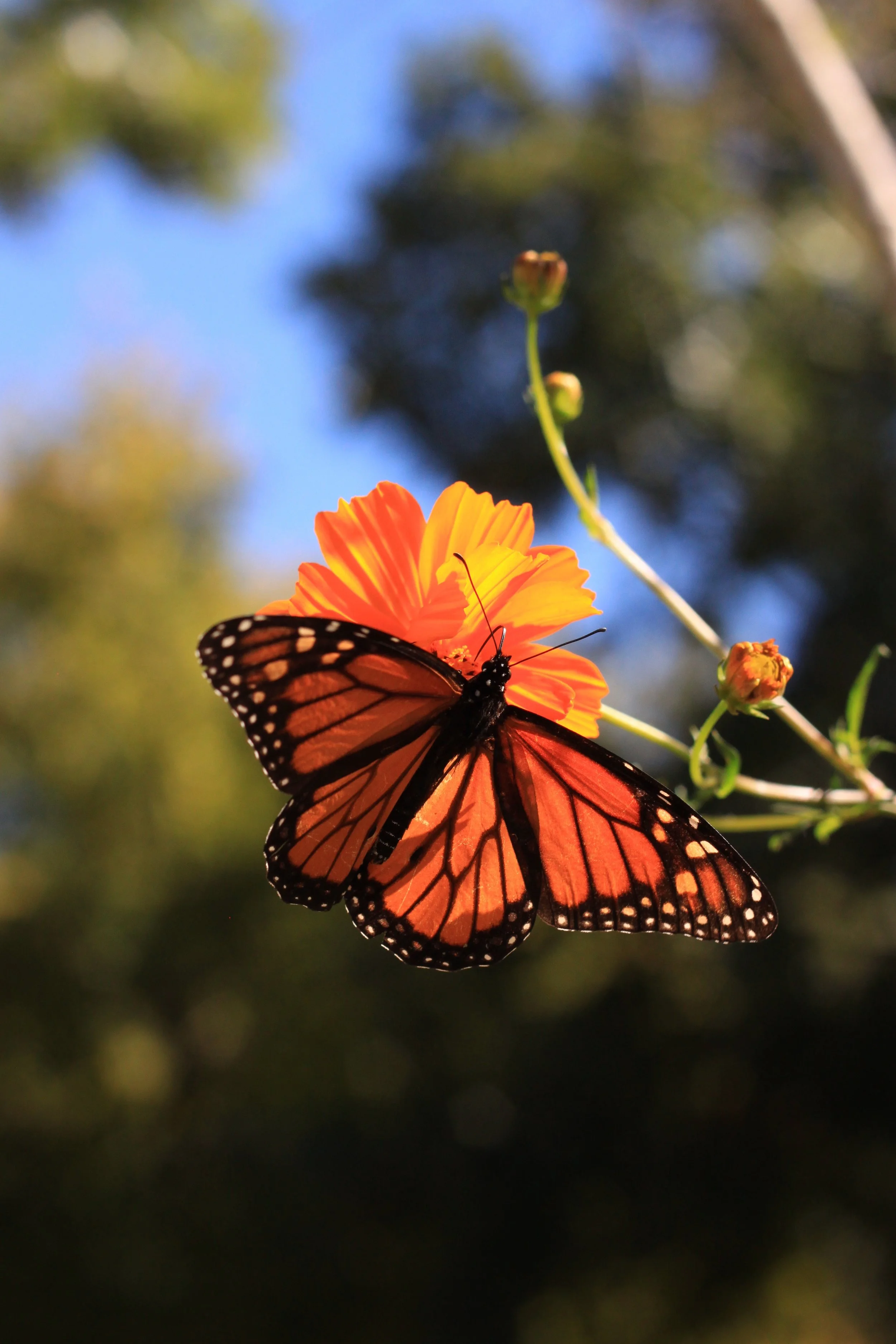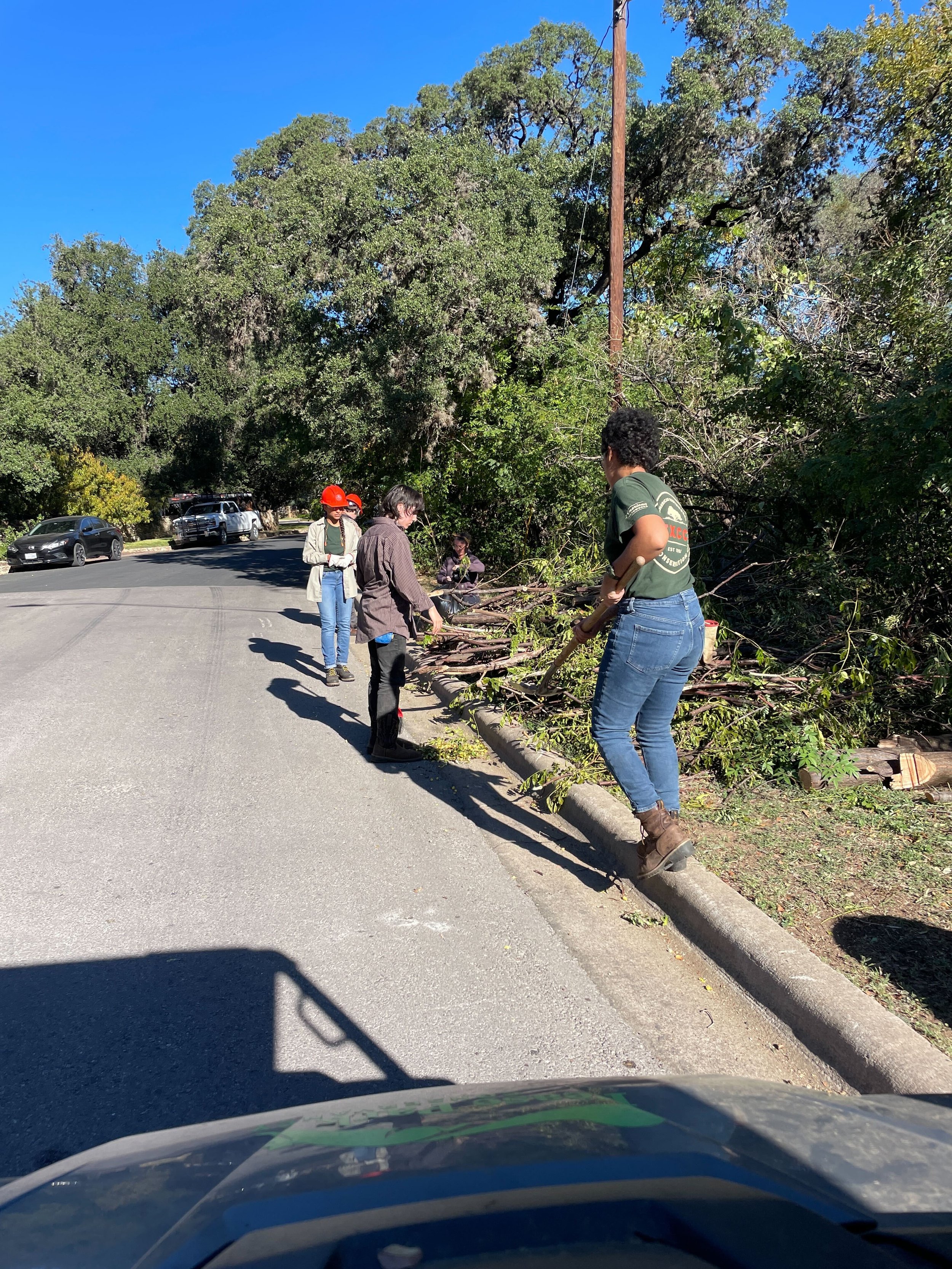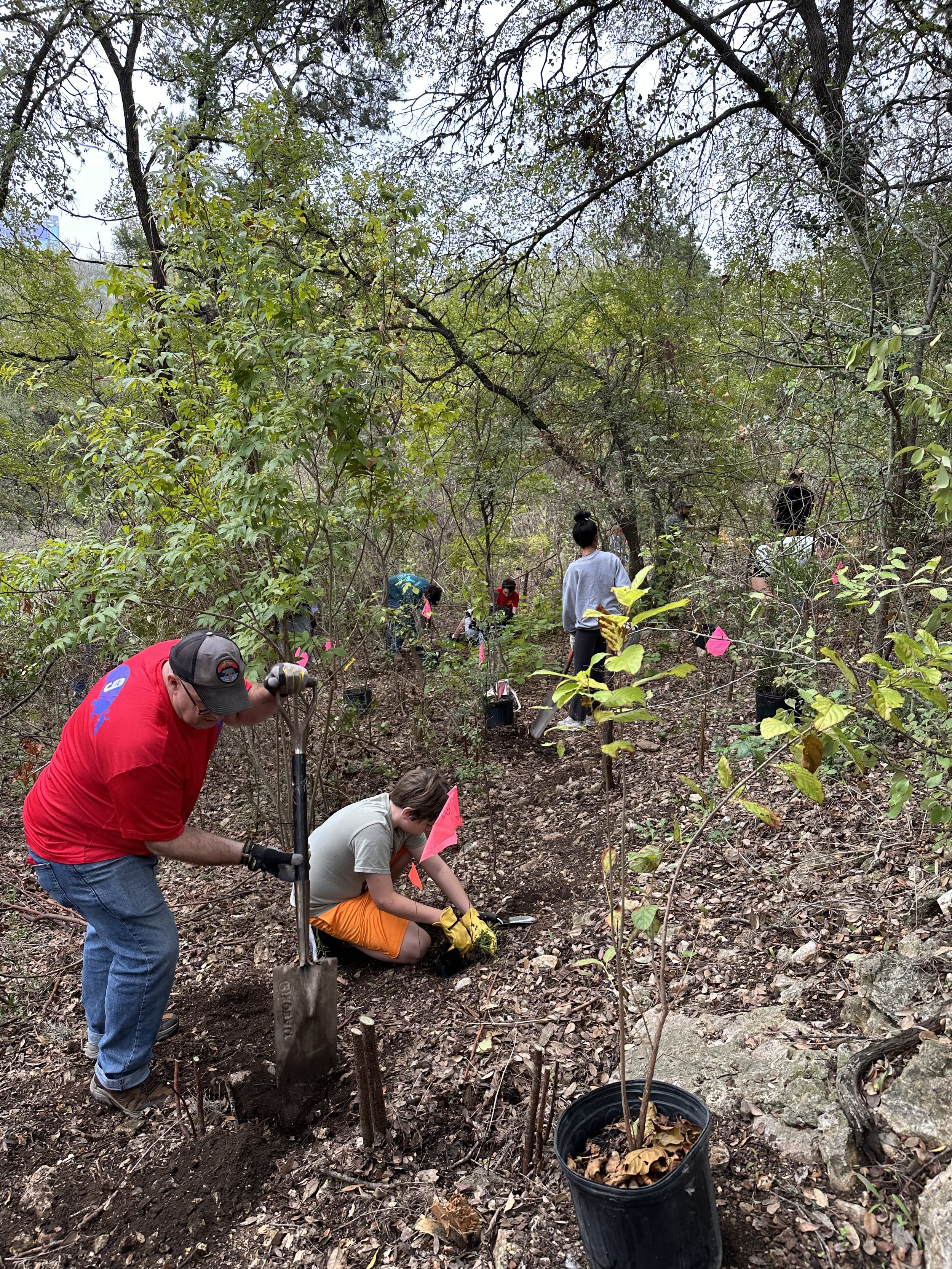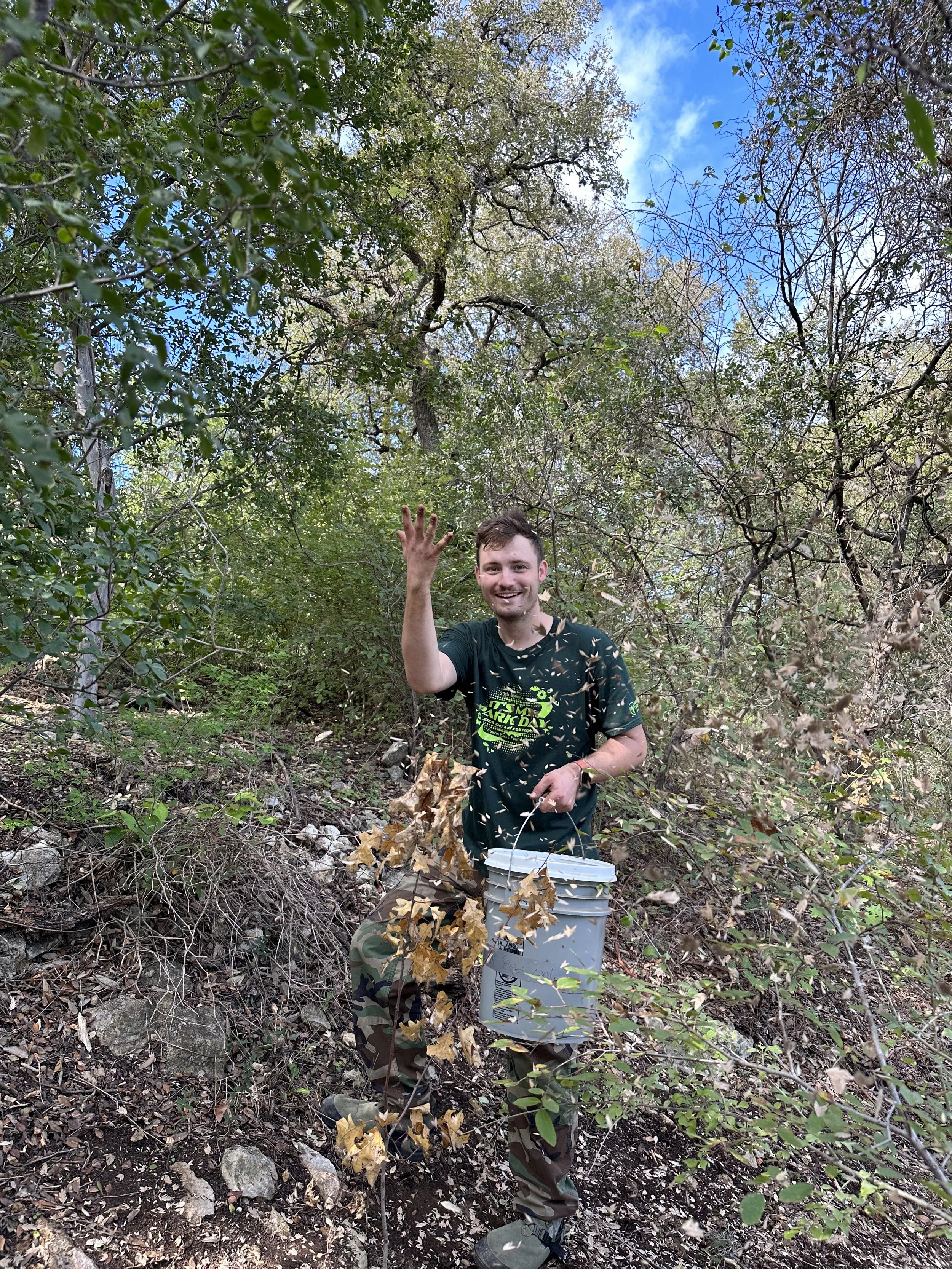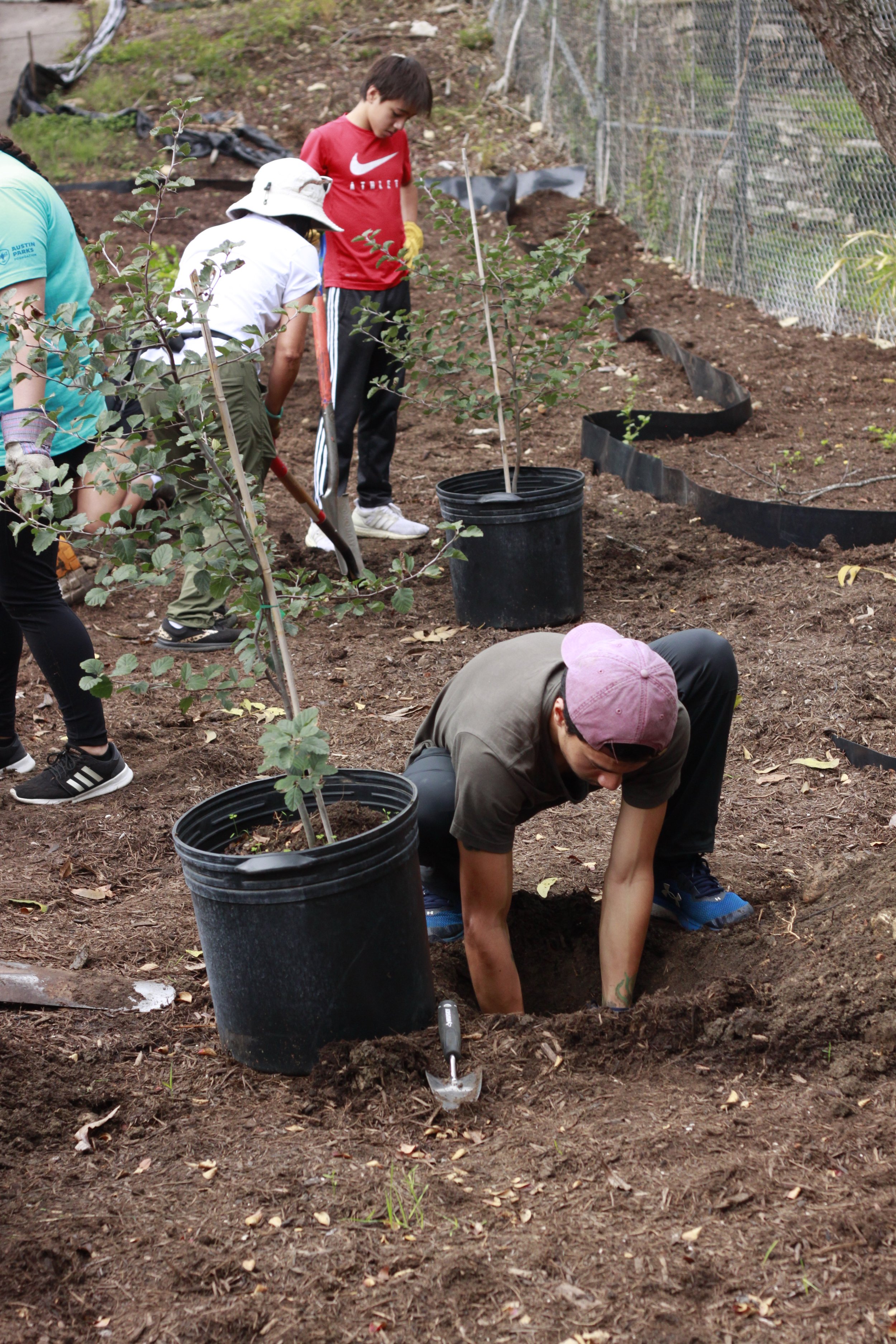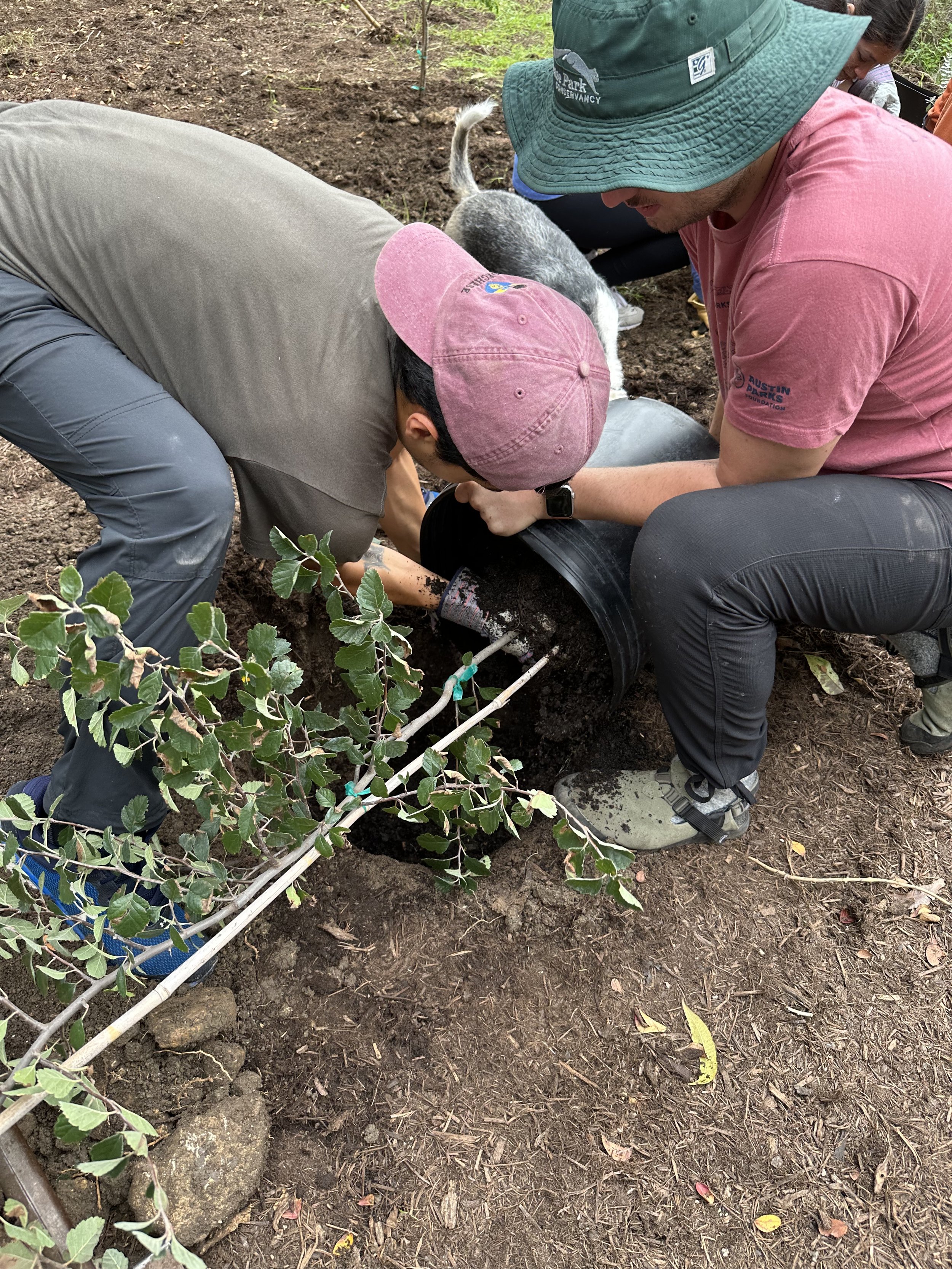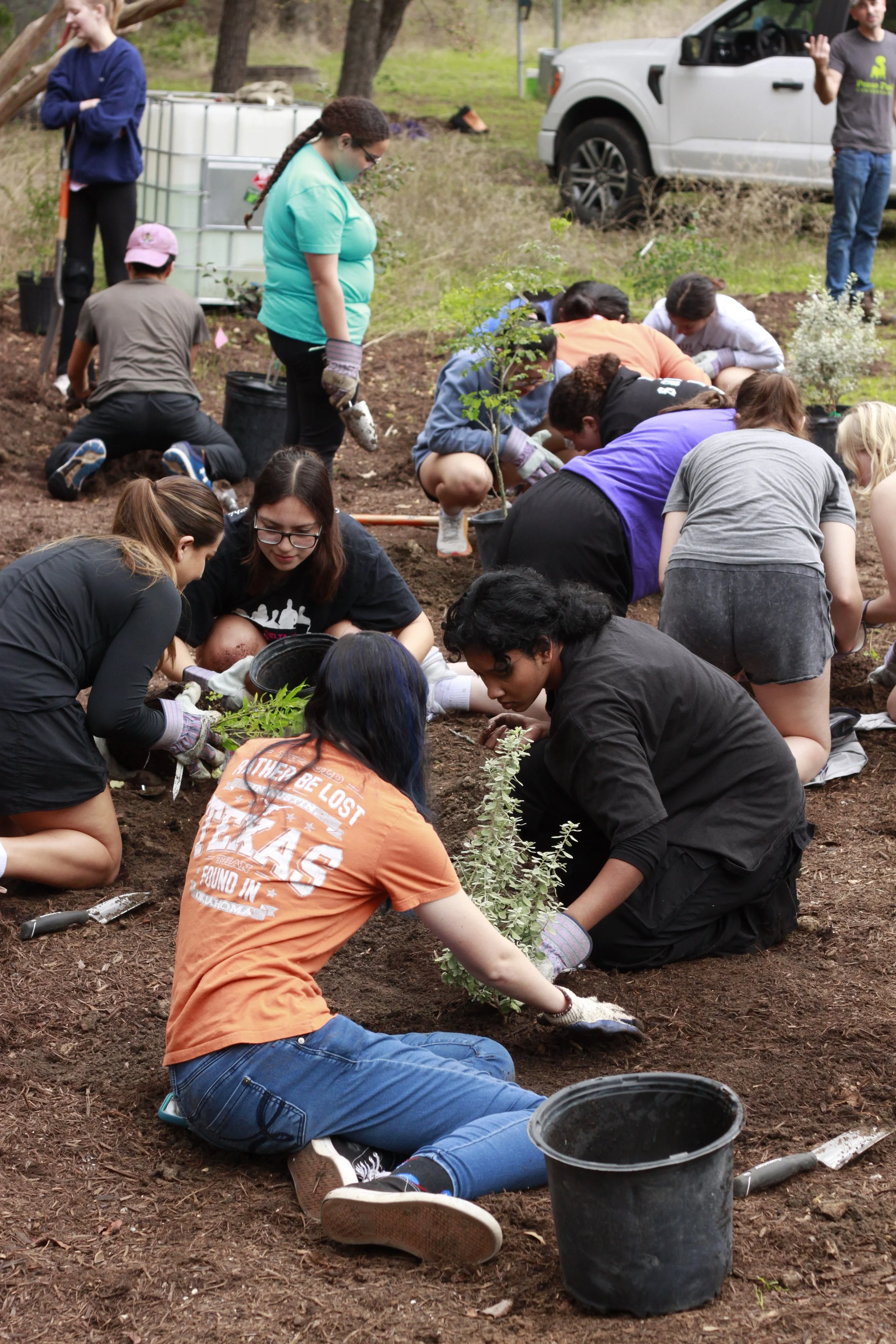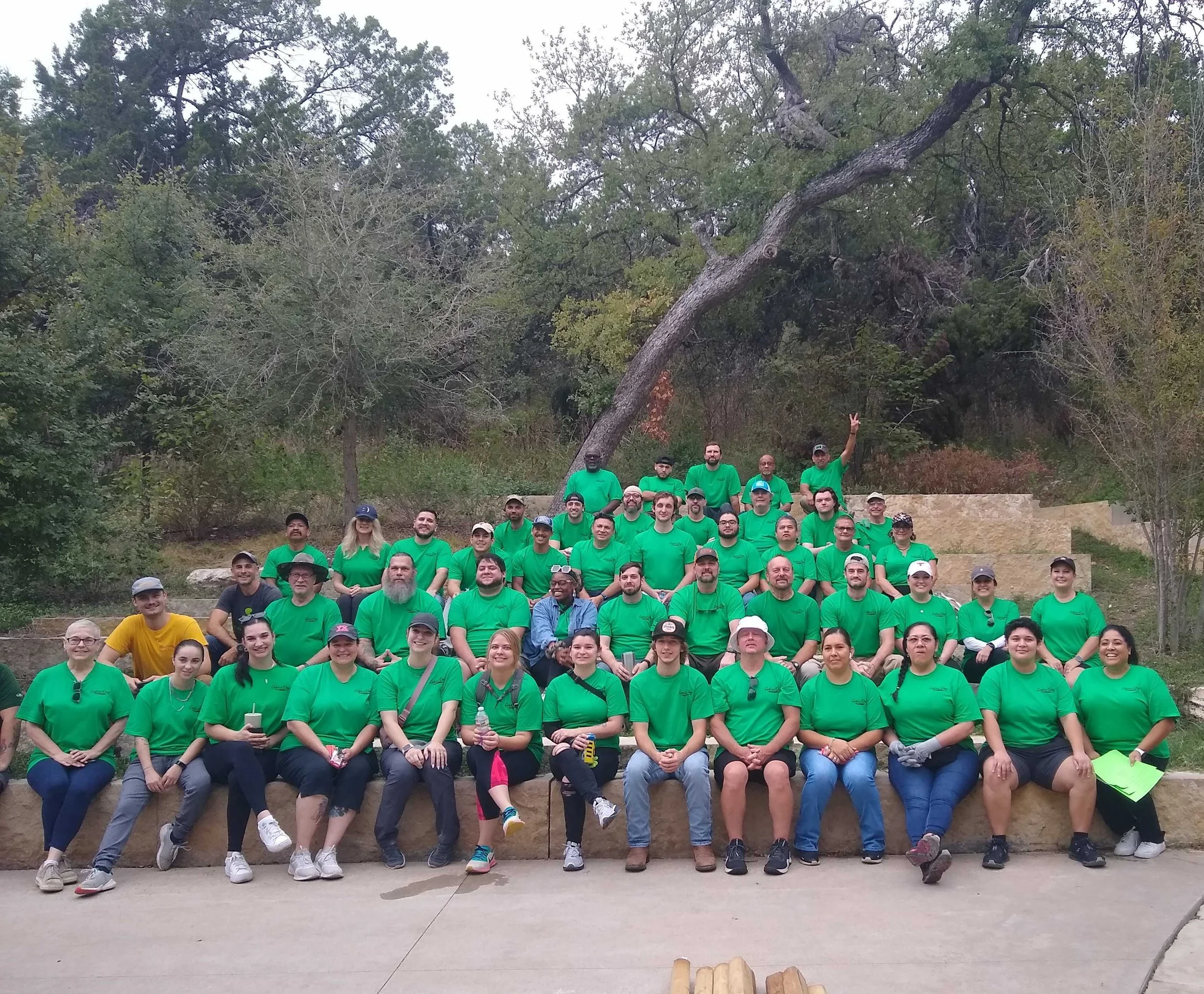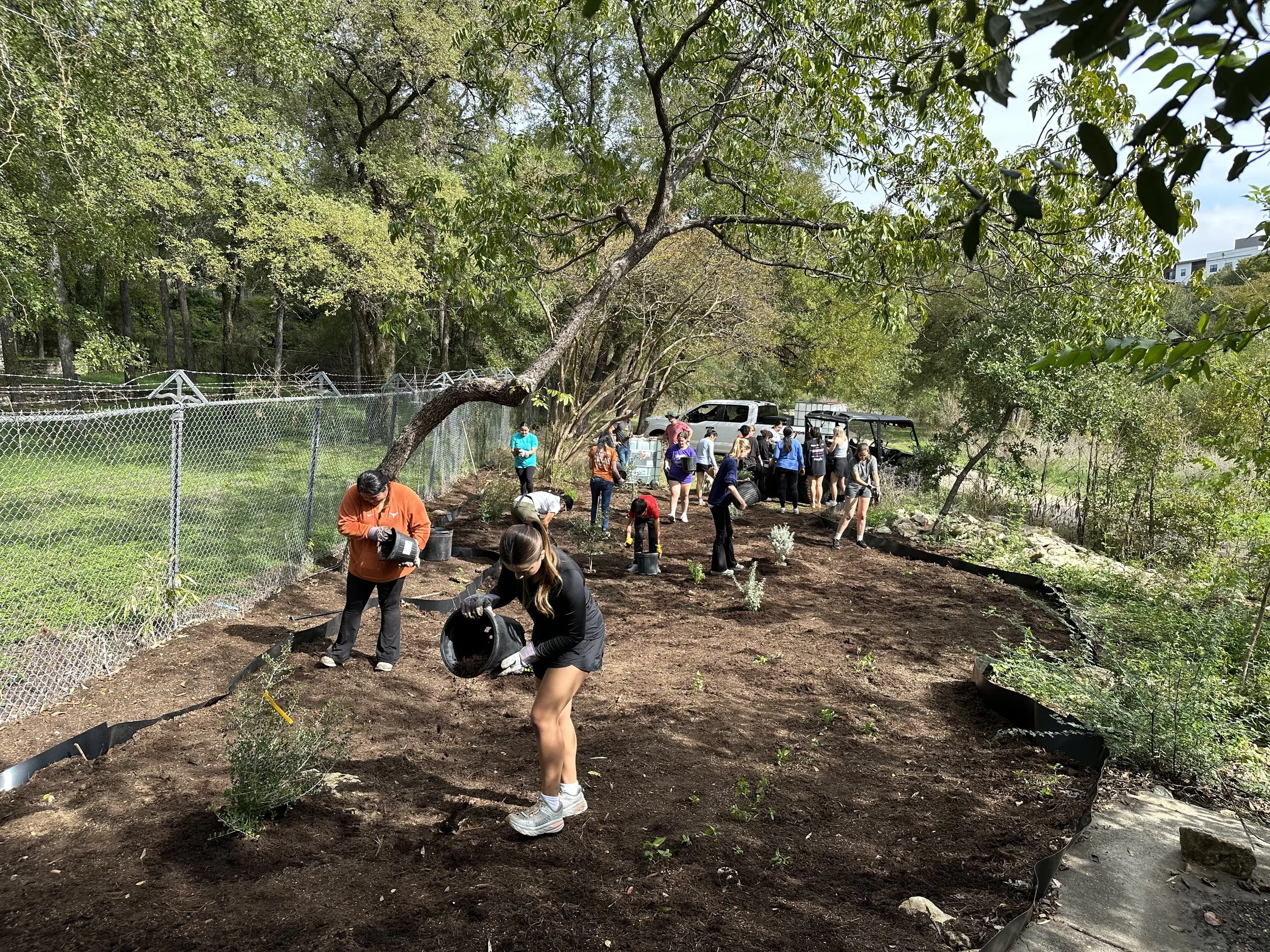A mission in mutualism
Pease Park Conservancy is dedicated to preserving Austin’s first and oldest urban greenspace, all while ensuring it is an equitable park for all of Austin to enjoy.
These two segments of our mission strategically overlap through conservation efforts led by our Conservation and Park Operations Teams. We actively engage Austinites in conservation projects with the goal of inspiring future generations of environmentalists.
After a broiling summer, the fall season has been a cornucopia of conservation initiatives that have benefited from our motivated volunteer force, the Pease Corps.
An Environment for Everyone
Our land management practices recognize the innate beauty and practicality of the Central Texas native landscape. As humans, our presence in an ecosystem and how we treat our natural resources can produce positive or negative impacts. When we enter an area and disregard what already exists in a space, we do more harm than good.
Historically, Pease Park was inundated with ornamental trees as a way to beautify the space. Species like Ligustrum, Chinaberry, and Catclaw were once admired for their novelty. However, time has demonstrated the detriments of these species to the health of an ecosystem, as they are invasive species that do not provide beneficial environmental services to the habitats and organisms.
At Pease Park Conservancy we are committed to removing invasive species and reintroducing native species that can thrive and nurture the biodiversity of our local environment. Much of this work is currently focused on the Windsor Hillside. After a study of this 226,593 square-foot area revealed that over 80% consisted of invasive species, PPC’s Conservation team jumped into action. In response, for the next 5 years, PPC will undertake a two-phased plan to manage the invasive species found throughout the Windsor Hillside.
Phase one focused on 65,000 square feet on the upper hillside of Kingsbury Commons and was initiated by removing Catclaw, Ligustrum, and Chinaberry through a PPC contract with the Texas Conservation Corps. Additional efforts included the removal of 176 lbs of Chinaberry berries that could have produced new saplings, therefore removing thousands of invasive trees before they have the potential to grow.
With this new blank canvas, a team of 20 community members turned volunteers joined the Conservation team for an extensive planting effort to celebrate It’s My Park Day. Participants were shown proper planting methods to encourage the survival of plantings and worked in teams to disperse and plant understory species. Several of these trees were sourced through the APACHE Tree Grant Program and with the assistance of volunteers, over 140 native plants were planted on the site, including:
Turks Cap
Button Bush
Mimosa Borealis
Cedar Sage
Coral Berry
Pigeon berry
Mountain pea
Yaupon holly
White Mistflower
Possumhaw
Volunteers also collected trash and spread 10 gallons of inland sea oat seeds to function as ground cover and assist with slope retention on the exposed soil.
With the reintroduction of native species, the biodiversity of the area has an opportunity to flourish. Through these efforts, pollinator species, birds, mammals, and other creatures will have a habitat brimming with plants that offer sustenance, shelter, and other necessary resources.
Tapping into our Texan Roots
For several months earlier this year, PPC’s Conservation team and countless volunteers removed bamboo root tubers from the Northern slope of the 24th Street Bridge. (Eliminating Invasive Plants at Pease, Feb. 2023).
After months of monitoring without seeing new growth, and installing a root barrier for good measure, the treated area was a sliver of blank canvas in our ecosystem's greater mosaic. It invited ideas and inspiration to create new habitats for integral organisms. Parker Chambers, a previous Park Operations Technician worked with our Conservation team to install native and adapted shrub and tree species in this area, including:
Coral Berries
Yaupon Holly
Texas Mountain Laurel
Turks Cap
Texas Sage
Mexican Bird of Paradise
False Indigo
Blanco crabapple
Native wildflower seeds (Fire Wheels, Bluebonnets, Lemon Mint, Purple Coneflower, etc.)
Each of the above species contributes to various habitats as they provide food and shelter to native species. Pollinator species like bees and butterflies use the nectar of fall and spring blooms, while birds and mammals consume the fruit that these plants produce.
For example, the Blanco Crabapple Tree is a perennial tree that can grow up to 30 feet tall and offers delicate spring blooms and yellow-green pomes in the fall. Its range includes the creeks of the Edwards Plateau, but it is not a common tree in the wild, nor one that is easy to source from nurseries. The Conservancy’s Conservation Manager (Nick Boysen) and Native Horticulture Coordinator (Alicia Rusthoven) ventured on a trip to the Texas Hill country where they were able to purchase two blanco crabapple trees and bring them to their new home in Pease Park. We are happy to introduce this unique tree to Pease Park and extend its range within Central Texas. After planning, preparation, and even rescheduling after a severe storm, these beauties were planted in Pease Park in November during the City of Austin’s annual celebration of Arbor Day and Monarch Appreciation Day - the Roots & Wings Festival.
As an official host of the Roots & Wings festival, not only were we able to receive grant funding to cover the cost of plants but we were able to engage the community in a unique educational opportunity. Through the grant, the Conservancy purchased a total of 13 trees, two of which being the coveted Blanco Crabapple Trees, and over 7 pounds of native wildflower mix and native prairie grass seeds. By leading a Pollinator Planting Party we were able to teach volunteers proper planting techniques, share plant knowledge, emphasize the importance of pollinator species in our world, and facilitate tangible environmental change in Pease Park.
People, Parks, and the Planet
Every year, Pease Park Conservancy honors the incredible dedication Austinites have for greenspaces through the Richard F. Craig Volunteer of the Year Awards. An individual and an organization that stand out in their volunteerism are selected to receive this award.
This year we are thrilled to honor Michelle Fisher as our individual award winner. Michelle has mulched, removed invasive species, collected litter, planted, and cared for the green space of Pease Park for over 20 years. Her first experiences in the park were in 1983 when she began wandering the Shoal Creek Trail and celebrated Eeyore’s Birthday. Although she lives several miles away from Pease, she has logged over 600 hours of volunteer service and looks forward to many more years of mulching, weeding, and chilling in the park.
Our group Volunteer of the Year award goes to Gables Residential. Gables employees exemplified the power of community this year in their care for Pease Park. Their work has quite literally taken a step beyond mulching, as they installed two sets of stairs to promote access into Live Oak Meadow. The team worked tirelessly to mend loose gravel slopes and create defined walkable steps from Parkway into the park. Additionally, they laid the groundwork for the 24th Street planting opportunity by supplying rich compost and mulching the site. In doing so, Gables has set the plants up for success by ensuring they have a rich microbiome to establish their roots and mature.
These initiatives and volunteer opportunities bring a plethora of generations, experiences, and backgrounds together. At the end of the day, our goal is to encourage folks to learn something new, participate in conservation initiatives, and ultimately appreciate the unique relationship we have with the environment.


